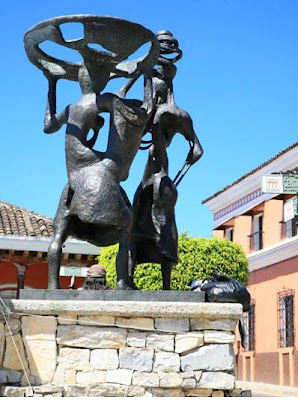There are over 50 lakes here, one of which is half in Mexican Territory and half in Guatemalan; around 8 of the lakes are easily accessible via some roads and lots of vehicle tracks that run through the forest surrounding the lakes.
At the western edge of this lake district you'll find the impressive and worth-while Mayan Ruins of Chinkultic: see the Mexperience Guide and Photo Gallery for details.
You can arrange a tour of the lakes from Comitan or (further away from here) San Cristobal de las Casas, although if you have a rental car, you can explore this area most effectively, take your time in the areas you want to see more of and travel at your preferred pace.

The lakes themselves are well worth experiencing; they all reflect turquoise blues and greens, and coupled with the scenic backdrop of the surrounding mountains and forests, the area is great for a whole day's exploration.
You can bring your own food and drink, or eat locally at one of the many food stalls, cafes and restaurants dotted around the main lakes.
Small boats and makeshift rafts, made from tree trunks tied together are available for hire at most of the larger lakes, in case you want to go out on the water and get a view from the lakes themselves. Ask locally for details and barter your price as fees are not fixed.

It's an easy day-trip from Comitan, although if you're not staying in Comitan, you may want to consider staying there or at nearby Museo Parador Santa Maria to really have enough time to enjoy the lakes fully during daylight hours and make your journey less tiring.
You are allowed to bathe in the lakes, so if you like swimming in natural waters, pack your swimming gear, although changing facilities are limited, so you'll have to 'rough it' in that respect.
If you're traveling in this area, the Lakes of Montebello are well worth a day trip. The lakes have a calm, serene and relaxing atmosphere; the air is sweet and pure, and even during busy times, because of the expanse of the area, you'll always be able to find a quiet corner to just contemplate, surrounded by some of nature's most wonderful creations.





















